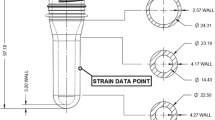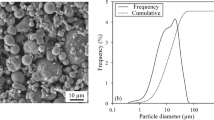Abstract
Single stage injection blow molding process, without preform storage and reheat, could be run on a standard injection molding machine, with the aim of producing short series of specific hollow parts. The polypropylene bottles are blow molded right after being injected. This implies that the preform has to remain sufficiently malleable to be blown while being viscous enough to avoid being pierced during the blow molding stage. These constraints lead to a small processing window, and so the process takes place between the melting temperature and the crystallization temperature, where the polypropylene is in its molten state but cool enough to enhance its viscosity without crystallizing. This single stage process introduces temperature gradients, high stretch rate and high cooling rate. Melt rheometry tests were performed to characterize the polymer behavior in the temperature range of the process, as well as Differential Scanning Calorimetry. A viscous Cross model is used with the thermal dependence assumed by an Arrhenius law. The process is simulated through a finite element code (POLYFLOW) in the ANSYS Workbench framework. The geometry allows an axisymmetric approach. The transient simulation is run under anisothermal conditions and viscous heating is taken into account. Sensitivity studies are carried out and reveal the influence of process parameters such as the material behavior, the blowing pressure and the initial temperature field. Thickness measurements using image analysis are performed and the simulation results are compared to the experimental ones. The simulation shows broad agreements with the experimental results. An optimization loop is run to determine the optimal initial thickness repartition. Design points are defined along the preform and the optimization modifies the thickness at these locations.





















Similar content being viewed by others
References
ANSYS (2010) Ansys polyflow user’s guide. release 13 ⋅0
Bellet M, Monasse B, Agassant JF (2002) Simulation numérique des procédés de soufflage. Techniques de l’ingénieur (in french)
Béreaux Y, Charmeau JY, Balcaen J (2011) Optical measurement and modelling of parison sag and swell in blow moulding. Int J Mater Form:5
Bordival M, Schmidt FM, Maoult YL, Velay V (2009) Optimization of preform temperature distribution for the stretch-blow molding of pet bottles: Infrared heating and blowing modeling. Polym Eng Sci:49
Devaux N (2003) Influence d’un cisaillement sur les premiers stades de la cristallisation du polypropylène. PhD thesis, Thèse de l’École des Mines de Paris (in french)
Duffo P, Monasse B, Haudin JM, GSell C, Dahoun A (1995) Rheology of polypropylene in the solid state. J Mater Sci:30
Duval C (2004) Polypropylènes (pp). Techniques de l’ingénieur (in french)
Fatt MSH, Ouyang X (2008) Three-dimensional constitutive equations for styrene butadiene rubber at high strain rates. Mech Mater:40
Groot JAWM, Giannopapa CG, Mattheij RMM (2010) A computer simulation model for the stretch blow moulding process of polymer containers. ASME:2010
Hopmann C, Michaeli W, Rasche S (2011) Fe-analysis of stretch-blow moulded bottles using an integrative process simulation. The 14th International ESAFORM Conference on Material Forming
Huang HX, Yin ZS, Liu JH (2007) Visualization study and analysis on perform growth in polyethylene terephthalate stretch blow molding. Journal of Polymer Applied Science:103
Lee DK, Soh SK (1996) Prediction of optimal preform thickness distribution in blow molding. Polym Eng Sci:36
Luersen MA, Riche RL (2004) Globalized nelder-mead method for engineering optimization. Computer and Structures:82
Menary GH, Tan CW, Armstrong CG, Salomeia Y, Harkin-Jones EMA (2010) Validating injection stretch-blow molding simulation through free blow trials. Polymer Engineering and Science:50
Pham XT, Thibault F, Lim LT (2004) Modeling and simulation of stretch blow molding of polyethylene terephthalate. Polym Eng Sci:44
Press WH, Teukolsky SA, Vetterling WT, Flannery BP (1994) Numerical recipes in Fortran ? The Art of Scientific Computing, 2nd Edn. Cambrige University Press ISBN 0-51-43064-X
Schmidt FM, Agassant JF, Bellet M (1998) Experimental study and numerical simulation of the injection stretch/blow molding process. Polym Eng Sci:38
Thevenon A, Fulchiron R (2013) Elongational behavior of amorphous polymers in the vicinity and above the glass transition temperature. Polym Test:32
Thevenon A, Fulchiron R (2014a) Evolution of poly(propylene) morphology in the rubbery state under uniaxial strain. Macromol Mater Eng:299
Thevenon A, Fulchiron R (2014b) A thermomechanical modeling approach for the structural changes in semi-crystalline polymers under elongational strain. J Mater Sci:49
Thibault F, Malo A, Lanctot B, Diraddo R (2007) Preform shape and operating condition optimization for the stretch blow molding process. Polym Eng Sci:47
Wang S, Makinouchi A, Okamoto M, Kotaka T, Maeshima M, Ibe N, Nakagawa T (2000) Viscoplastic material modeling for the stretch blow molding simulation. Int Polym Process XV
Yang LM, Shim VPW, Lim CT (2000) A visco-hyperelastic approach to modeling the constitutive behavior of rubber. International Journal of Impact Engineering:24
Yang ZJ, Harkin-Jones E, Menary GH, Armstrong CG (2004) A non-isothermal finite element model for injection stretch-blow molding of pet bottles with parametric studies. Polym Eng Sci:44
Acknowledgments
This work is a part of the IS2 project supported by OSÉO a french agency for research and industrial development (FUI F1111066V). It involves three companies : JP Grosfilley, Europlastiques, Runner Plast together with INSA-Lyon. Funding by OSÉO is gratefully acknowledged.
Author information
Authors and Affiliations
Corresponding author
Rights and permissions
About this article
Cite this article
Biglione, J., Béreaux, Y., Charmeau, JY. et al. Numerical simulation and optimization of the injection blow molding of polypropylene bottles - a single stage process. Int J Mater Form 9, 471–487 (2016). https://doi.org/10.1007/s12289-015-1234-y
Received:
Accepted:
Published:
Issue Date:
DOI: https://doi.org/10.1007/s12289-015-1234-y




